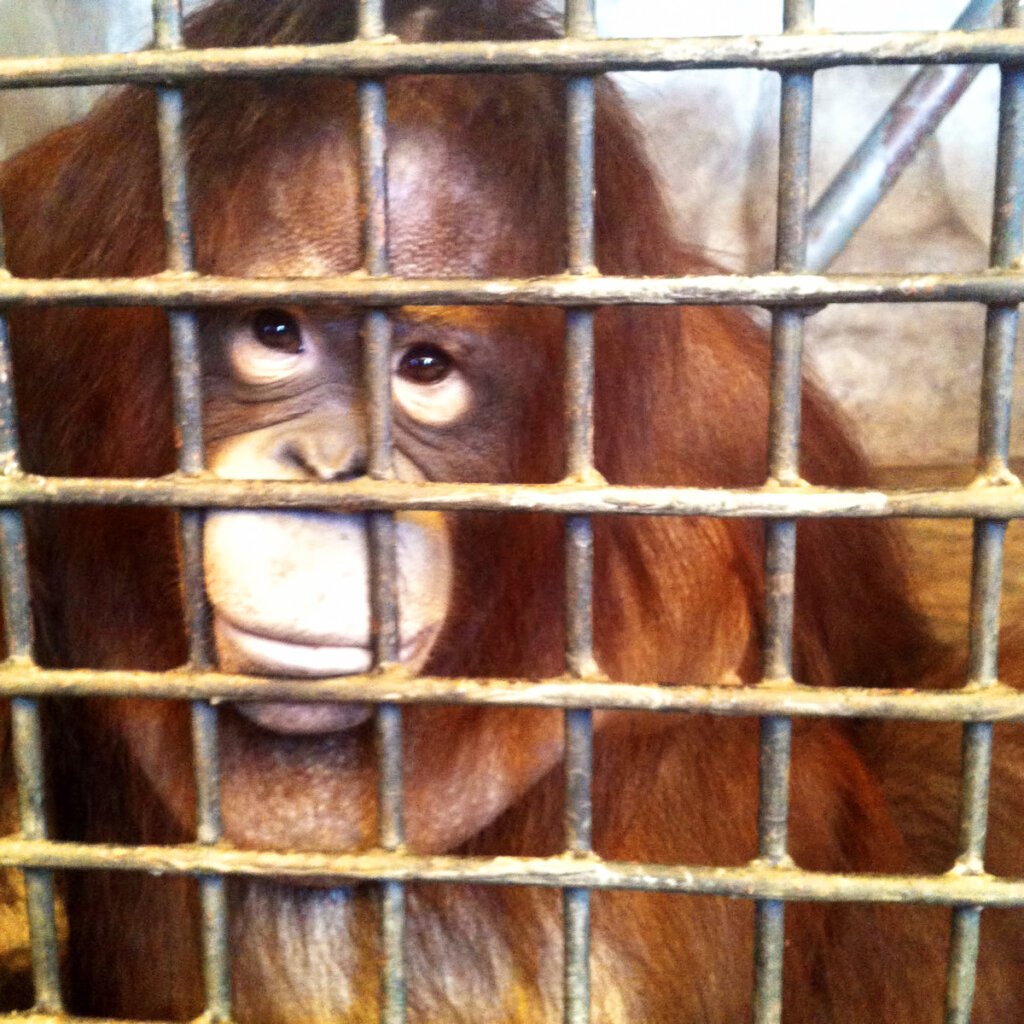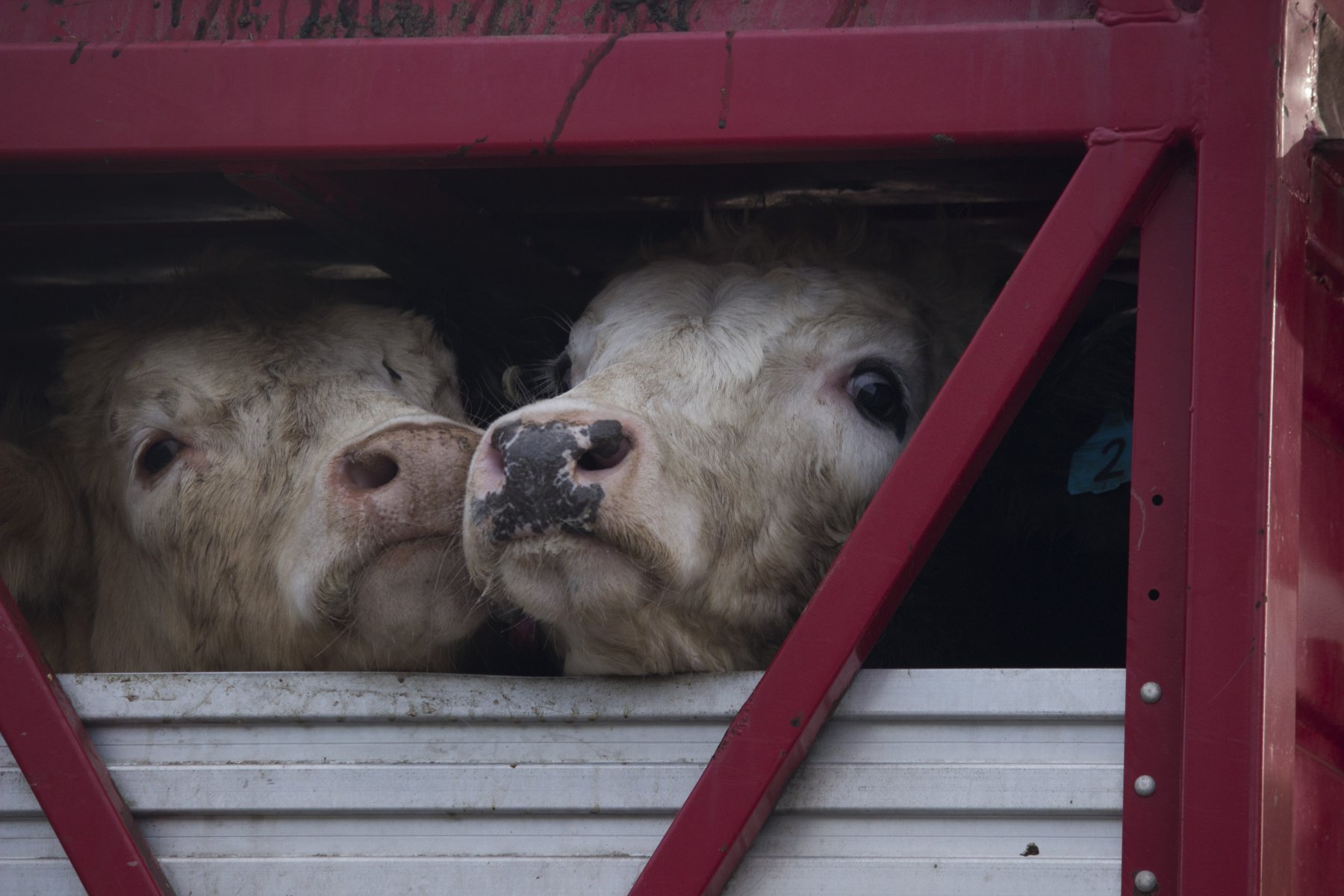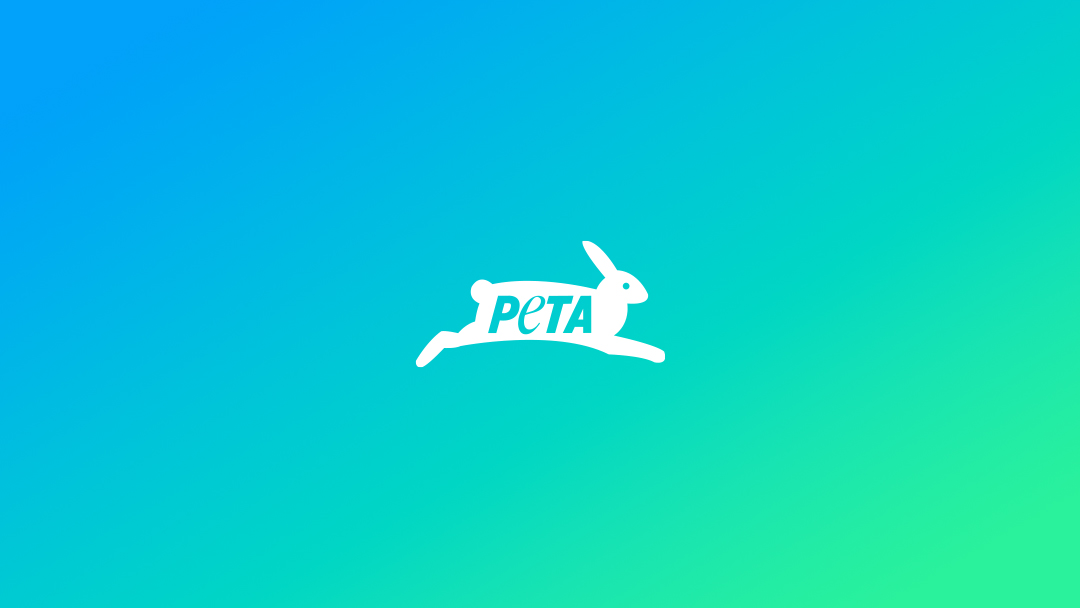
The Truth About Cows Killed For Food
Every year, around 8 million cattle are killed in Australian abattoirs and dismembered piece by piece to be sold for their flesh. The majority of them die at just 18 months old, a far cry from their natural life expectancy of about 25 years.
Cows (and steers and bulls) have personalities as distinct as those of dogs, with their own emotions and interests. They have been observed chasing balls, can learn how to unlock gates, and have been known to go to extraordinary lengths to escape from abattoirs.
Every time we cook a steak or order a hamburger, we’re sentencing one of these sensitive, clever creatures to a life of suffering and an early death.
Castration, Branding, and Dehorning
When they’re still quite young, many cows are burned with hot irons (branded), their horns are cut or burned off, and males’ testicles are ripped out of their scrotums as they’re castrated – all without pain relief.
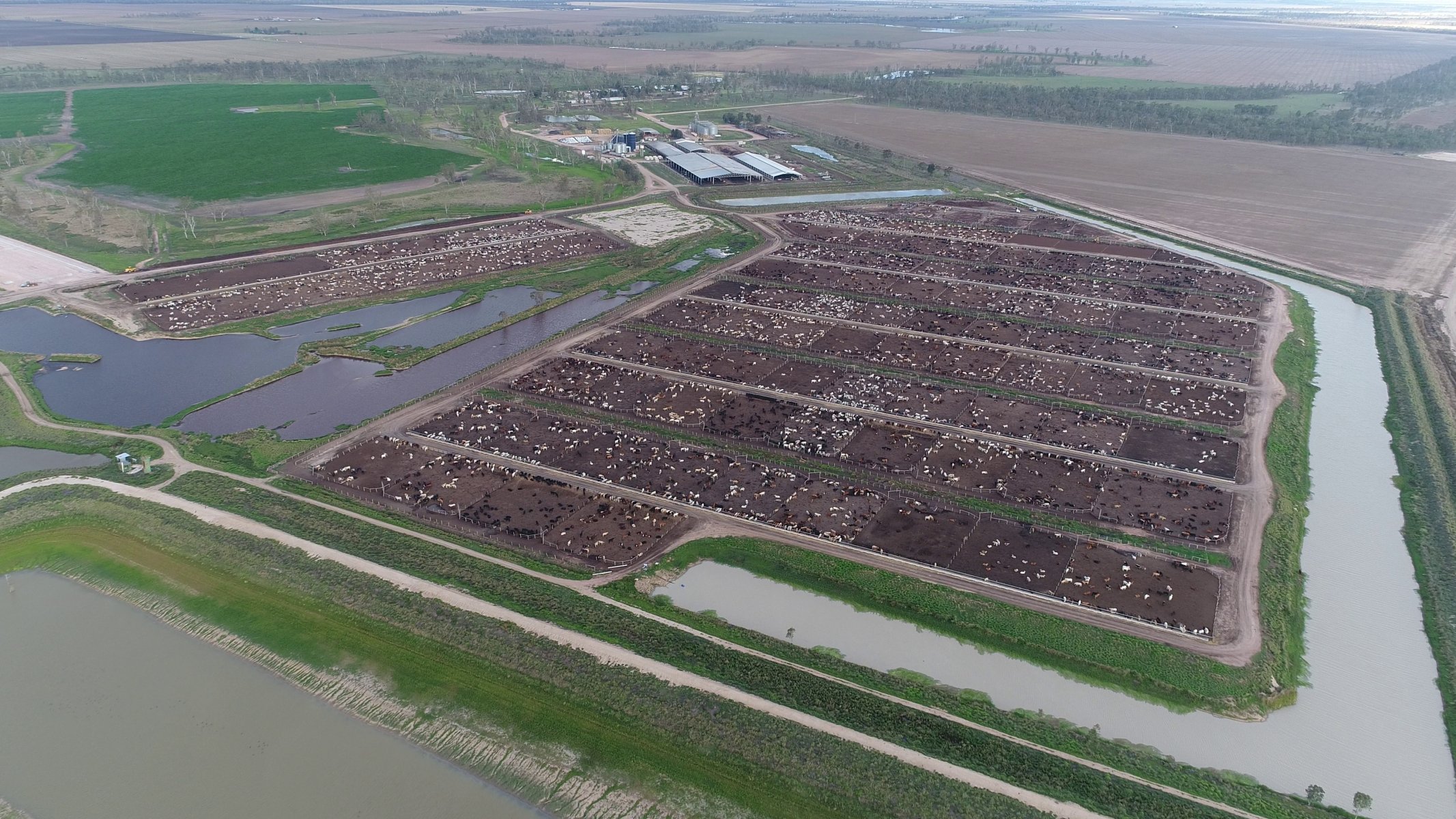
Feedlots
Cattle raised for beef in Australia typically start their lives in grazing paddocks, sometimes with little shade or shelter from extreme temperatures. Despite any claims that Australian cattle are “grass-fed”, many of these animals spend the last six to 12 monthsof their lives on cramped, faeces-filled feedlots, where they’re given only grain to eat and limited space to exercise so they can be fattened before slaughter. Such filthy, crowded conditions encourage the spread of disease, so cows are often diagnosed with footrot, botulism, respiratory disease, and liver abscesses.
Transport
Eventually, all cattle are crammed into trucks – typically without food or water – to be taken to an abattoir. According to the Department of Agriculture, Fisheries and Forestry’s guidelines, cattle can be transported for 48 hours without water. Because of Australia’s vast distances and often extreme temperatures, many cows die on the way.
Around 1 million additional cows are crammed onto ships (for trips that last weeks) bound for Brunei, China, Indonesia, Israel, Japan, Malaysia, the Philippines, Russia, or Vietnam as part of the live-export industry. During their time in transit, they endure extreme temperatures, dehydration, and starvation – and some are even trampled to death. Those who survive the journey are often subjected to forms of abuse and methods of slaughter that are illegal in Australia.
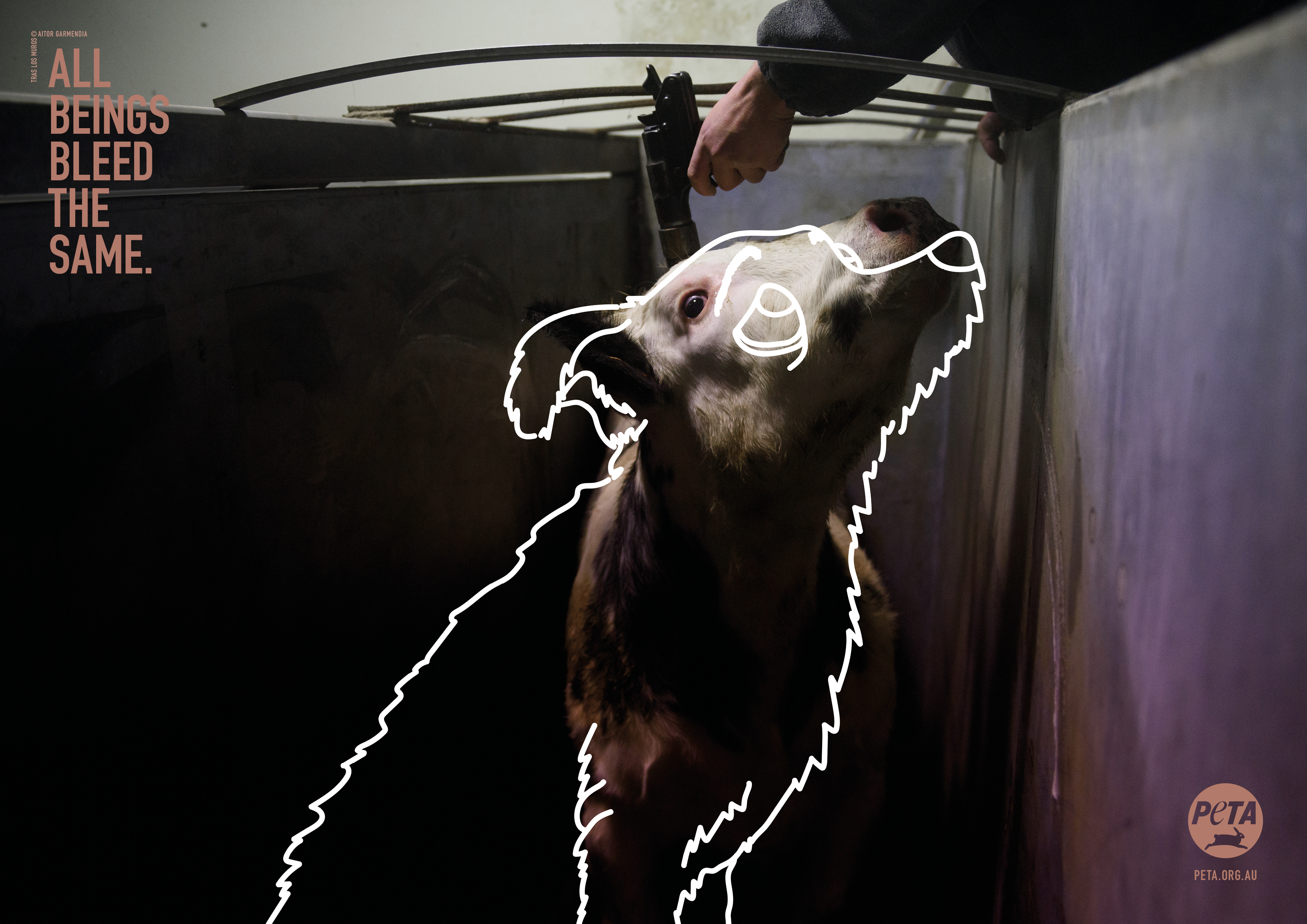
Slaughter
Once at the abattoir, cattle are shot in the head with a captive-bolt gun, hung up by one leg, and taken onto the killing floor, where their throats are cut and they’re skinned and gutted. In order to meet quotas, the kill line moves quickly, so animals are often improperly stunned and face the fatal incision while still alive – alert and petrified. As one abattoir worker described their last moments, “They die piece by piece.”
Stunning is part of acceptable ritual – halal and kosher– slaughter in Australia for both the domestic and export meat markets.
How Is Any of This Legal?
Cows and other animals used for food in Australia have few legal protections. States are left to try to enforce their limited animal-welfare laws, but this is difficult, as the Primary Industries Ministerial Council has established a separate voluntary code for the livestock industry. A government-commissioned report on live export found that “[c]ompliance with these codes is not mandated under legislation and they are generally written as guidelines, which are difficult to enforce”.
You can help put an end to this cycle of suffering. Browse through PETA’svegan starter kit for tips and recipes to help you make the transition to meat- and dairy-free eating today.
Animals Used for Food:
Environment | Free Vegetarian/Vegan Starter Kit | Chickens | Fish | Pigs | Sheep | Dairy Cows
Help Animals in 2025: Renew Your PETA Membership!
